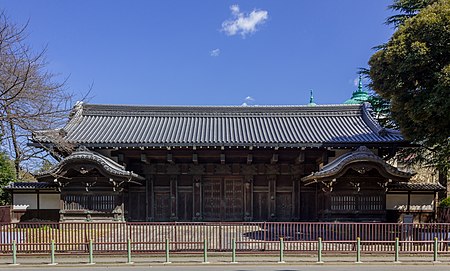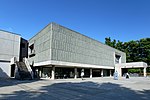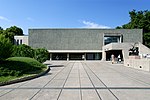Kuromon (Tokyo)
Buildings and structures in TaitōGates in JapanImportant Cultural Properties of JapanUeno Park

Kuromon (黒門, Black gate) is an historical gate (mon) located in the Taitō ward of Tokyo, Japan. One of two remaining gates of the Edo period daimyō mansions in the city (the other one is Akamon, currently located in the University of Tokyo). The exact date in which it was first constructed is not known, but the consensus is that it dates from the late Edo period, probably from the late 18th century or early 19th century.It is currently located in the grounds of the Tokyo National Museum, and it has been designated an Important Cultural Property.
Excerpt from the Wikipedia article Kuromon (Tokyo) (License: CC BY-SA 3.0, Authors, Images).Kuromon (Tokyo)
Kanda-Hakusan Line, Taito
Geographical coordinates (GPS) Address Nearby Places Show on map
Geographical coordinates (GPS)
| Latitude | Longitude |
|---|---|
| N 35.71817 ° | E 139.77461 ° |
Address
東京国立博物館
Kanda-Hakusan Line
110-8712 Taito
Japan
Open on Google Maps









